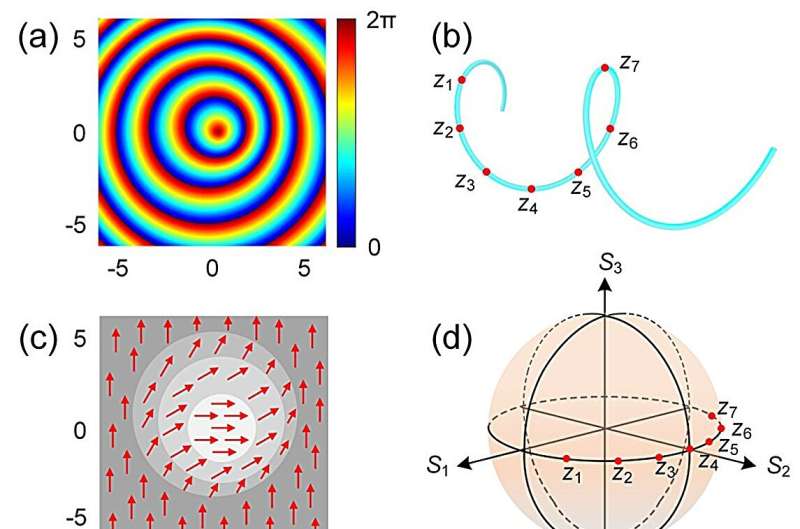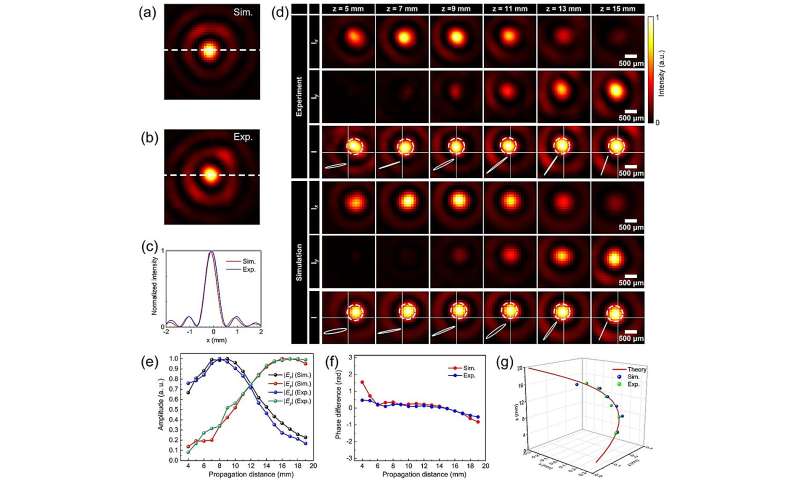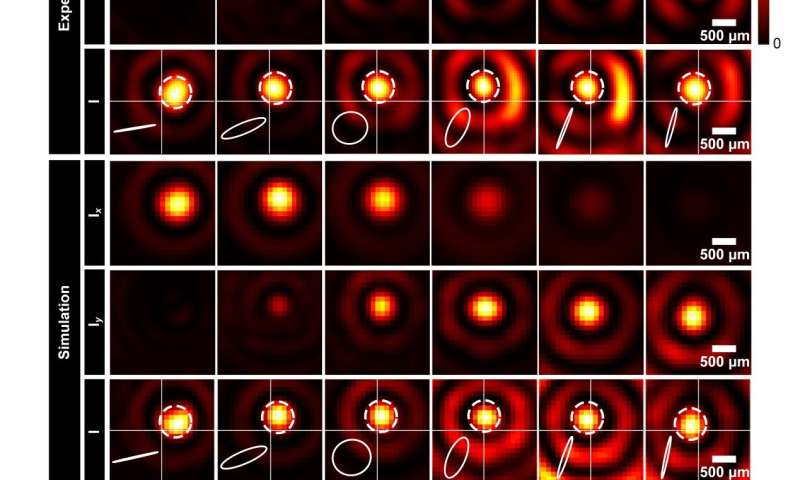This article has been reviewed according to Science X's editorial process and policies. Editors have highlighted the following attributes while ensuring the content's credibility:
fact-checked
proofread
Structured light beams with controllable polarization along arbitrary trajectories

A structured light refers to a light field which is "customized" in both space and time, characterized by its unique distribution of amplitude, phase, and polarization state in both space and time.
Polarization plays a crucial role in structured light beams. Besides polarization manipulation on a single transverse plane, controlling polarization along the propagation direction in longitudinal structured light beams is also an important dimension.
Current research mainly focuses on controlling the polarization of beams along the optical axis. However, this greatly limits the spatial freedom of polarization for longitudinally structured light beams.
It is worth exploring whether it is possible to break free from the constraints of the optical axis and manipulate polarization along any transmission trajectory in space. This could lead to the generation of structured light beams with polarization that varies along arbitrary trajectories, opening up new possibilities for creating customized spatial structured lights.
In a study published in Opto-Electronic Science, researchers used tri-layer metallic metasurfaces to generate structured light beams with polarization variations along arbitrary spatial trajectories.
In order to achieve these customized spatial structured lights, the work first designed a phase modulation function on the input plane, consisting of a series of expanding circular rings with moving centers. The trajectory curve of propagation is formed by the convergence of conical beams emitted from these moving circular rings on the input plane.
Secondly, by controlling the amplitude and phase difference of the orthogonally polarized beam components corresponding to the moving circular rings, polarization control at each point on the predetermined transmission trajectory can be achieved.
Following the preset helical transmission trajectory, they designed continuous variations of structured light polarized from 15° to 75° along the equator line on the Poincaré sphere, as well as continuous variations of structured light polarized from 15° to circular polarization and then to 75° along the equator of the northern hemisphere.
A terahertz focal plane imaging system was used to obtain the intensity, amplitude, and phase difference of the electric field components Ex and Ey at different transmission distances z. Under metasurface modulation, a high-brightness main lobe appeared, surrounded by several side lobes, and the overall intensity distribution of the light field resembled a zero-order Bessel function.
-

Experimental results for a structured light beam with linear longitudinal polarization variations along a helical transmission trajectory. (a), (b) Cross-sectional intensity profiles of the electric field at a propagation distance of z=15 mm for the simulation and experiment, respectively. (c) Cross-sectional intensity profiles (red and blue solid lines) extracted from (a) and (b) at the locations of white dashed lines. (d) The electric field component intensity and electric field intensity at different distances. (e), (f) Amplitudes and phase difference of electric field components Ex and Ey at different propagation distances. (g) Theoretical, simulated and experimental transmission trajectories. Credit: Opto-Electronic Science (2024). DOI: 10.29026/oes.2024.230052 -

Experimental results of a structured light beam with nonlinear longitudinal polarization variations along a helical transmission trajectory. (a) Intensity distributions for Ex, Ey, and total electric field at different distances. (b) Simulated and experimental amplitudes and (c) phase difference of electric field components Ex and Ey at different propagation distances. (d) Theoretical, simulated and experimental transmission trajectories. Credit: Opto-Electronic Science (2024). DOI: 10.29026/oes.2024.230052
Observing the intensity distribution of the light field at different transmission distances z, they found that the main lobe of the beam rotated counterclockwise in a continuous range from 5 mm to 15 mm, with Ix gradually decreasing and Iy gradually increasing.
The difference is that the phase difference of Ex and Ey between the two structured lights in the range of 5 mm to 15 mm gradually changes from 0 to -π, respectively, corresponding to the synthesized polarization states, which are in agreement with theoretical simulations.
The proposal for arbitrary trajectory structured light beams with longitudinally varying polarization offers a practical method for continuously regulating the characteristics of spatial structured light beams with non-axial transmission and opens up new possibilities for creating customized spatial structured light beams. This technique has potential uses in optical encryption, particle manipulation, and biomedical imaging.
More information: Tong Nan et al, Generation of structured light beams with polarization variation along arbitrary spatial trajectories using tri-layer metasurfaces, Opto-Electronic Science (2024). DOI: 10.29026/oes.2024.230052
Provided by Compuscript Ltd





















